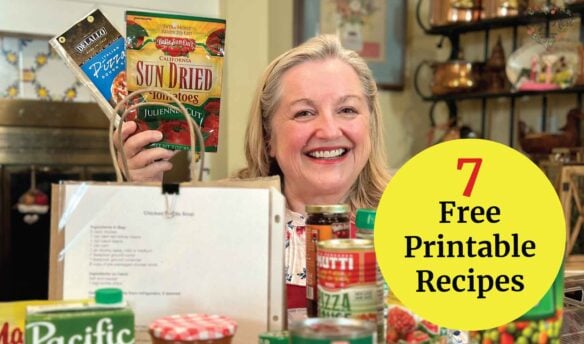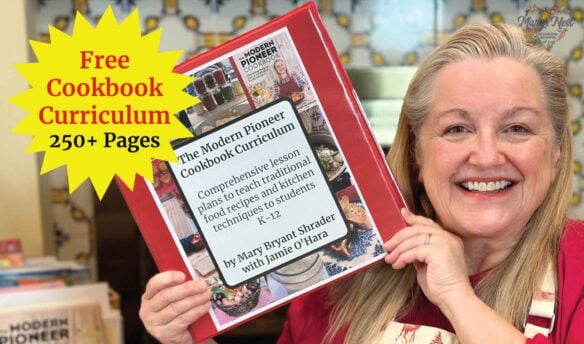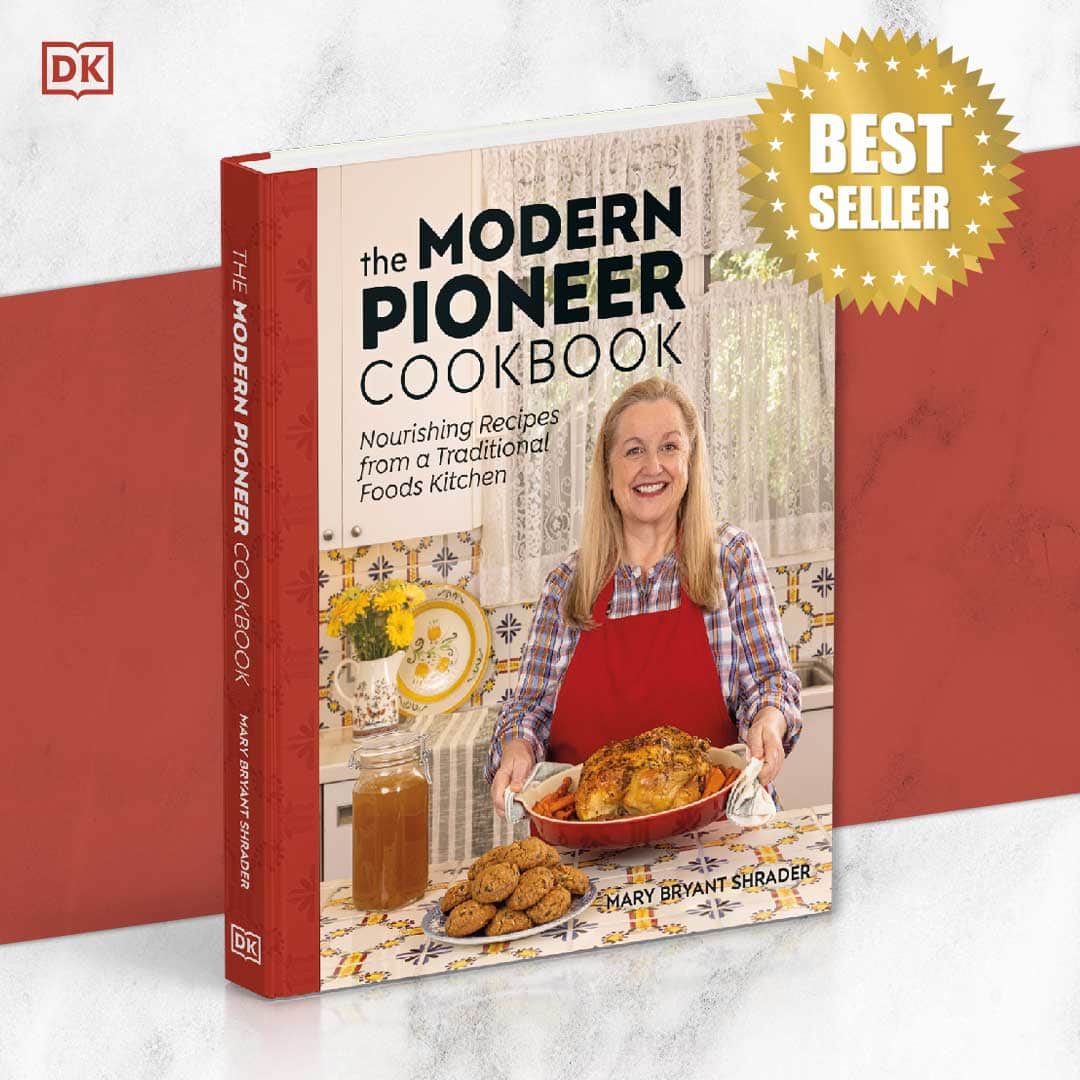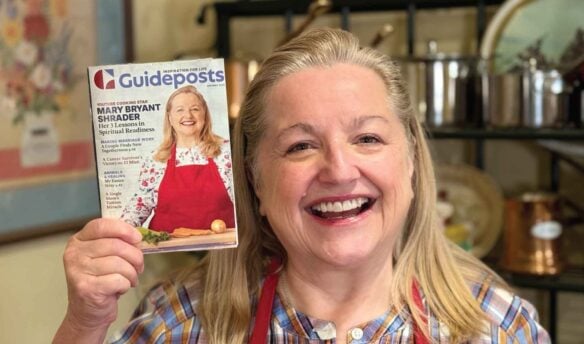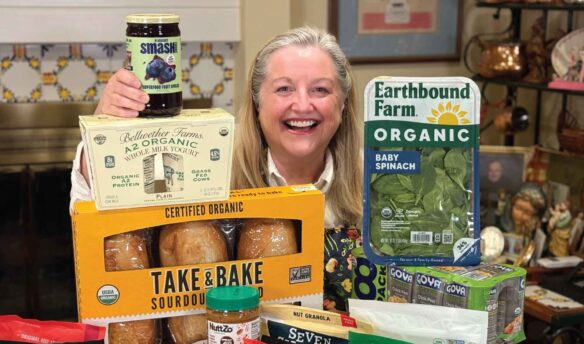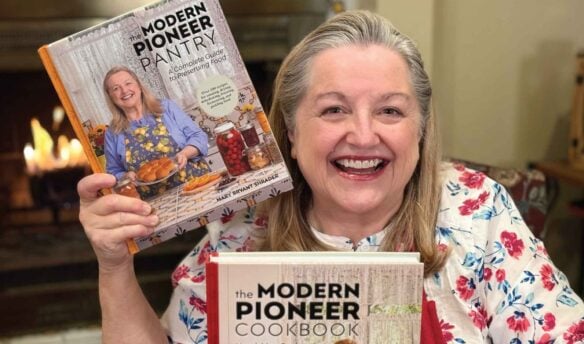I just filmed a brand-new Q&A video where I answered some of your most popular traditional food questions. In the video, I provide helpful tips and insights on topics near and dear to our Modern Pioneer hearts, including baking, culturing dairy, stocking a pantry, menu planning, and lots more!
Affiliates note: As an Amazon Associate I earn from qualifying purchases. My content may contain affiliate links to products and services. If you click through and make a purchase, I’ll receive a small commission. It does not affect the price you pay.
Table of Contents
- Traditional Foods Q&A Video
- How to Bake Sandwich Bread and Transition to Sourdough
- What Are The Benefits of L. Reuteri Super Yogurt?
- How to Stock a Traditional Foods Pantry
- The Modern Pioneer Pantry
- How to Create a Smooth-Running Traditional Foods Kitchen
- Even More of Your Questions Answered!
- Free Downloads
- The Modern Pioneer Cookbook
- Shop for items used in this blog post or video
Traditional Foods Q&A Video
Be sure to watch the Traditional Foods Q&A video to find out the answers to your most frequently asked questions. Here’s a quick peek at what I covered:
- Baking Questions: From troubleshooting tricky doughs to tips on using ancient grains like Einkorn, Spelt, and Emmer, I shared my best advice for creating beautiful baked goods.
- L. Reuteri Super Yogurt: I answered your questions about this powerful probiotic, including how to make it at home and incorporate it into your diet.
- Pantry Essentials: I talk about how to stock a nutrient-dense pantry and make the most of your ingredients for budget-friendly, traditional cooking.
- Transitioning to a Traditional Foods Kitchen: I provide practical tips to help you ease into creating a smooth-running kitchen, from meal planning and pantry organization to mastering the rhythm of soaking, fermenting, and prepping.
And that’s just the beginning! So be sure to watch the video to hear my complete answers and learn tips and tricks to make your traditional cooking journey even more rewarding. And then be sure to scroll through this blog post for lots more free resources for you to download and print out for your kitchen journal!
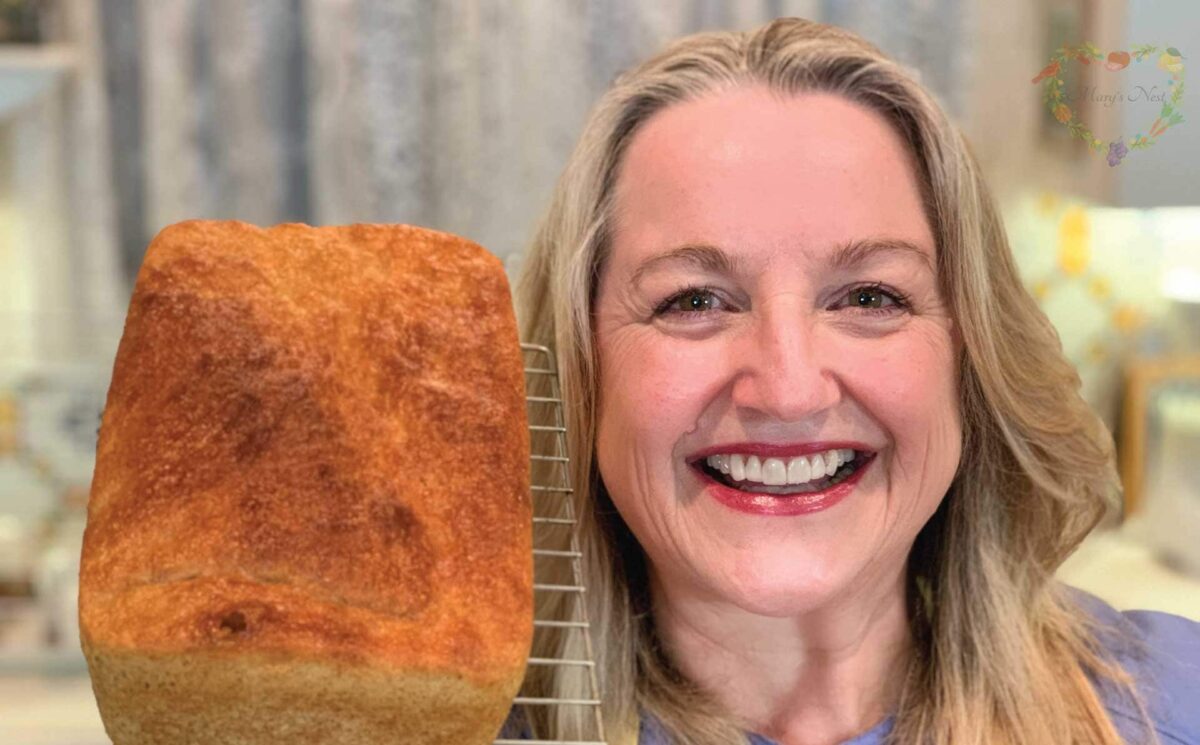
How to Bake Sandwich Bread and Transition to Sourdough
If you’re just starting out with bread baking, using packaged yeast is an excellent way to make soft and fluffy sandwich bread for your family. Once you feel confident, I encourage you to try sourdough bread—it’s a deeply rewarding process and brings a whole new level of flavor and nutrition to your table.
How to Make Sourdough Less Sour
If you’re worried about the tanginess of your sourdough starter or sourdough bread, don’t worry! I share a simple tip in the video: using a shorter fermentation time can make your sourdough bread less sour, which is especially helpful if you’re new to it or have little ones who prefer a milder taste.
However, a shorter fermentation time might yield a slightly denser bread, so I have an even better tip! I share one of the simplest ways to make sourdough bread less sour: Add a very small amount of an ingredient to your flour that I’m pretty sure everyone has in their pantry! Learn all about this little trick in today’s video.

What Are The Benefits of L. Reuteri Super Yogurt?
I am so passionate about this particular cultured dairy, and I spend a good deal of today’s video answering your frequently asked questions about how to make this Super Yogurt! Although technically not yogurt, L. Reuteri cultured dairy has been a hot topic, and I’m delighted to share what I’ve learned about this powerful probiotic-rich food. From its gut-healing properties to its potential benefits for improved sleep, smooth skin, weight loss, and overall health, this cultured dairy is truly a game-changer.
I also cover how to successfully make L. Reuteri cultured dairy at home in a yogurt maker and an Instant Pot, as well as how to troubleshoot common issues and incorporate the probiotic food into your diet for maximum benefits.
How to Learn Even More About L. Reuteri
If you are as fascinated by L. Reuteri as I am, check out the book Super Gut by New York Times best-selling author William Davis, MD.
You may already be familiar with Dr. Davis’s other bestsellers, Wheat Belly, The Wheat Belly Cookbook, and The Wheat Belly Journal, but be sure to add Super Gut to your traditional foods kitchen library. It’s a must-have!
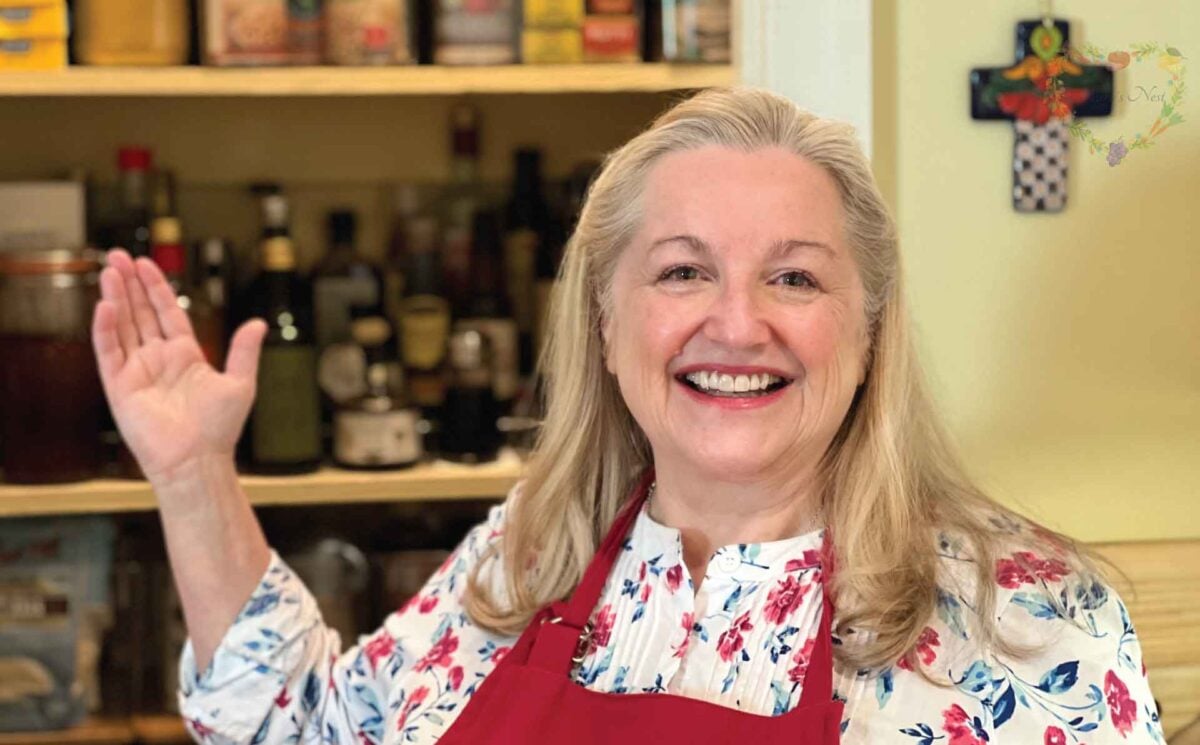
How to Stock a Traditional Foods Pantry
Stocking a pantry filled with nutrient-rich and nutrient-dense staples is one of the best ways to set yourself up for success in a traditional foods kitchen. But you don’t need to accomplish this overnight.
Stocking your traditional foods pantry is a journey. And I make this journey easy for you with my FREE 36-page Traditional Foods Four-Corners Pantry List. This list will provide you with an outline of all the traditional foods you want to consider adding to your Four-Corners Pantry, how to best store them, and how to use what your stock to create delicious and nutritious meals.
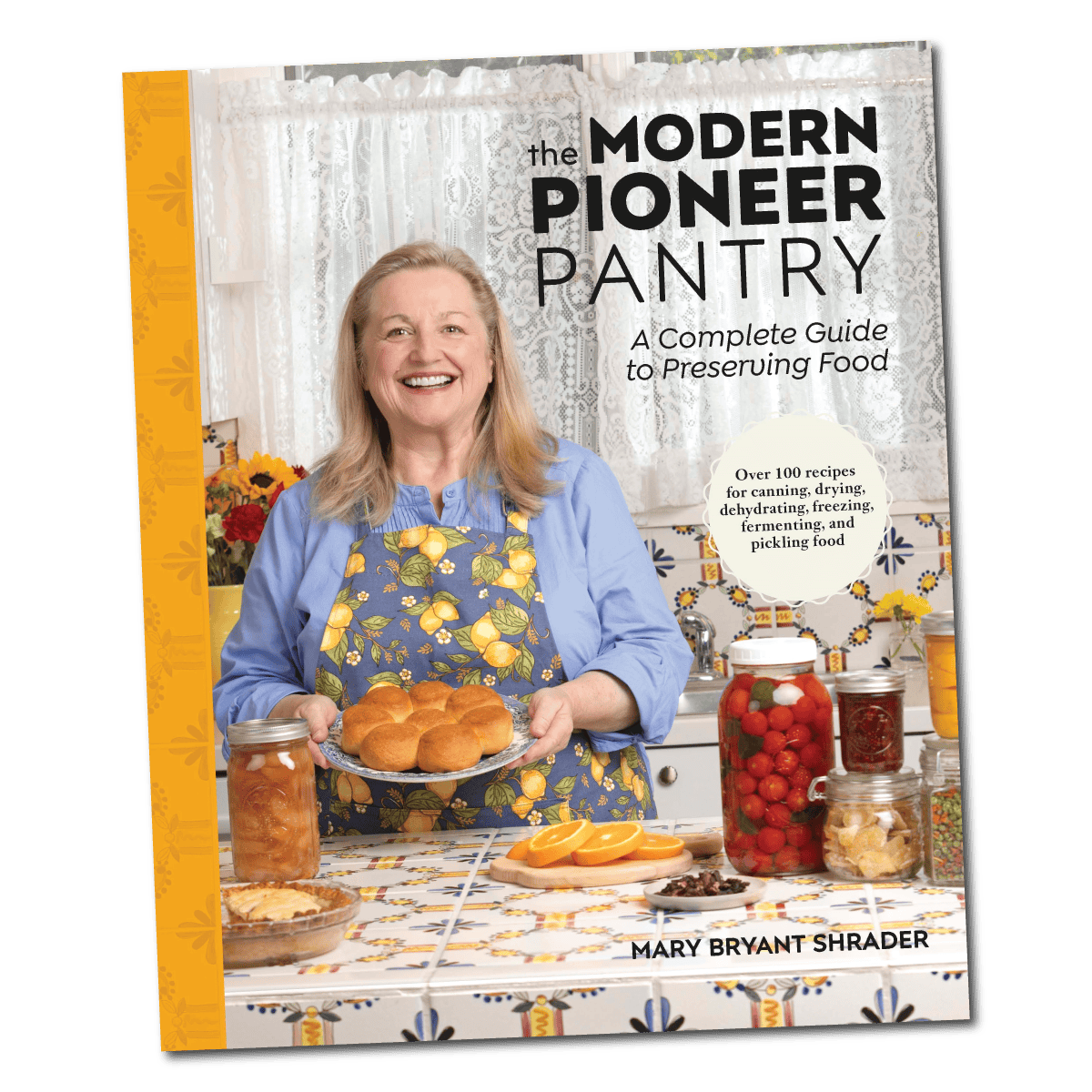
preOrder YOUR COPY Now!
The Modern Pioneer Pantry
Simple ingredients, timeless techniques, and a well-stocked pantry. Discover over 100 nourishing recipes to preserve food and turn pantry staples into delicious, homemade meals. Build a wholesome, traditional pantry—just like a modern pioneer!
Traditional Foods Must-Haves
In today’s video, I cover your frequently asked questions about the traditional foods must-haves, including a variety of healthy fats such as tallow and lard, and how to make them right in your own kitchen!
Plus, I share tips for sourcing quality ingredients on a budget. A well-stocked pantry makes it so much easier to whip up nourishing meals in no time, and it’s a key part of embracing the traditional foods lifestyle.
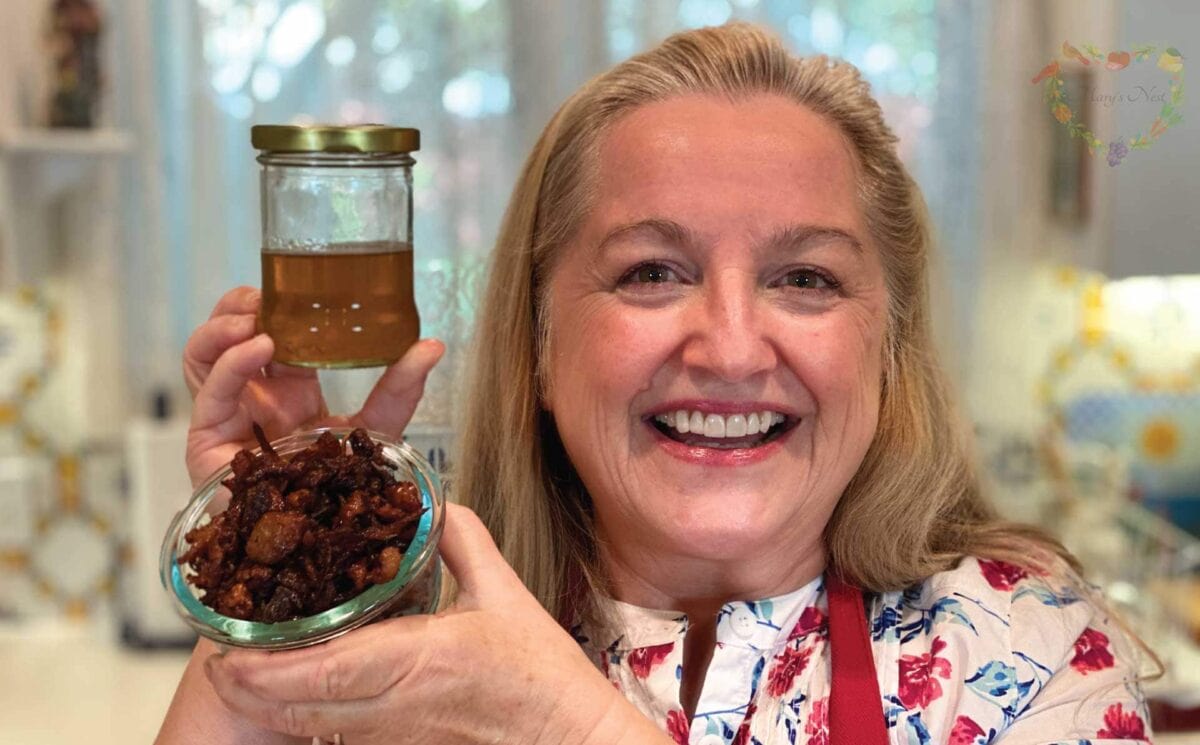
Learn More about Healthy Traditional Fats
Stocking your traditional foods pantry with traditional fats can be relatively easy when you choose animal fats, like tallow, lard, schmaltz, and butter—especially cultured butter, which is easy to make homemade. But what about traditional oils? Good quality olive oil, including all my favorite Texas olive oils and coconut oil, are options for your traditional foods pantry, but what about the new kid on the block—avocado oil?
What Is Wrong With Avocado Oil?
I have heard so much about how many folks love avocado oil, especially when making mayonnaise. But I’ll be honest with you…I can’t stand the taste! I prefer to make my mayonnaise with a combination of oils as recommended by Mary Enig, co-author of Nourishing Traditions with Sally Fallon Morell of Nourishing Traditions, and author of Know Your Fats.
So why don’t I like avocado oil? First is the taste. It always tasted off to me, almost like a rancid oil. And there might be a good reason why it tasted rancid to me, but more on that later!
Second is the fact that mechanically extracted olive oil is not a traditional oil. Yes, avocados have been around for a long time, and people have been eating avocados for just as long. However, mechanically extracting the oil from avocados is a new technique only developed in the 20th century. That means there isn’t a lot of data on the long-term use of concentrated avocado oil for its health benefits, as with more traditional oils such as olive and coconut oil.
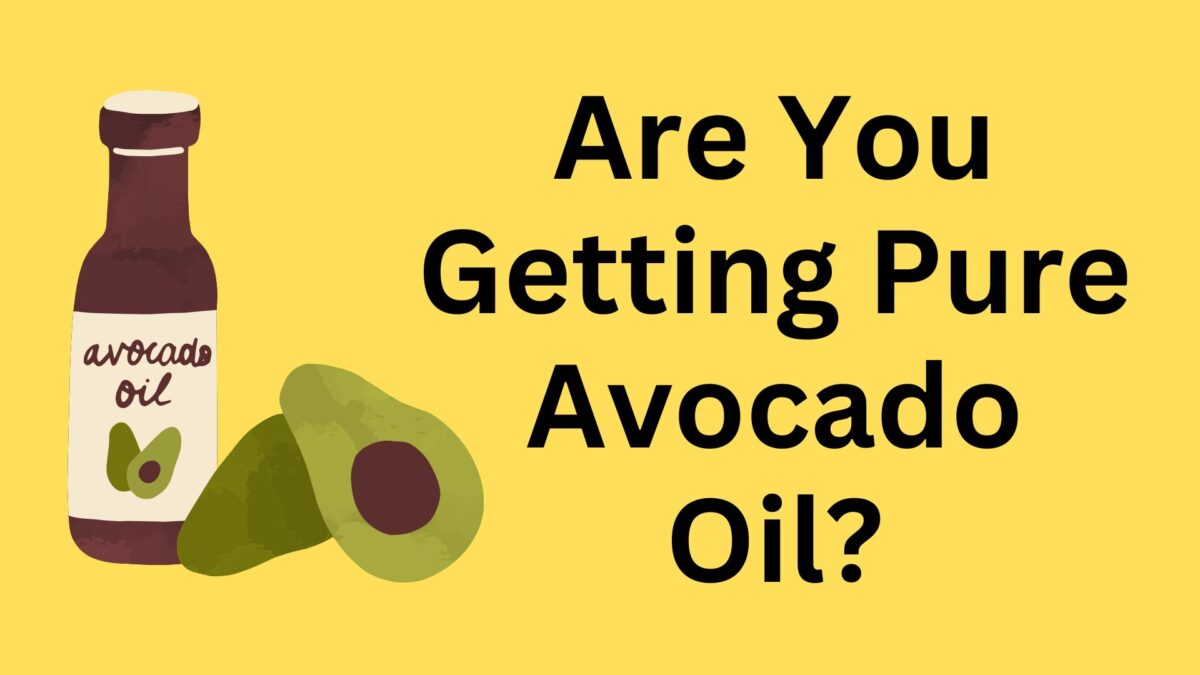
Are You Getting Pure Avocado Oil?
Some would argue that just because the process of extracting avocado oil is relatively new doesn’t mean the oil is harmful. That’s true, and we’ll have to see the results of studies on this oil over time. However, are consumers really getting pure avocado oil or some unknown mixture of oils?
If you decide to use avocado oil, check the ingredients on your packaging first. If you want to add it to your traditional foods kitchen, be warned that it might be rancid and adulterated with other cheaper oils. And these cheap oils are likely to be damaged, highly processed oils, which harm our health! To learn more about the purity of avocado oil sold to consumers, check out the links below:
- Your Avocado Oil Is Probably Rancid — Here’s How to Tell
- Why your avocado oil may be fake and contain other cheap oils
- First report on quality and purity evaluations of avocado oil sold in the US
- Purity and quality of private labeled avocado oil
For even more scientific data regarding the purity (or lack thereof) of avocado oil, here are two resources you’ll find fascinating:
- Rapid Detection of Avocado Oil Adulteration Using Low-Field Nuclear Magnetic Resonance
- Analysis and Authentication of Avocado Oil Using High Resolution NMR Spectroscopy
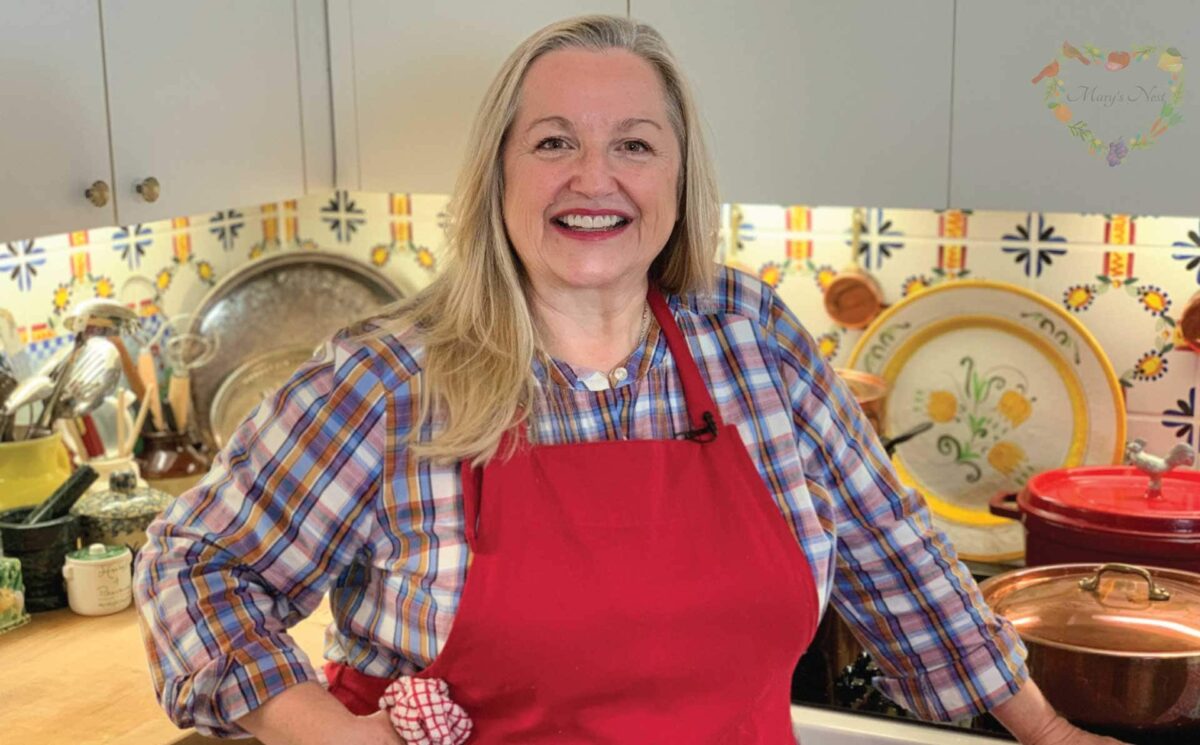
How to Create a Smooth-Running Traditional Foods Kitchen
One of the most common questions I get is how to keep the rhythm going in a traditional foods kitchen without feeling completely overwhelmed! It’s all about finding a system that works for you.
In my Q&A Video, I share my tips on meal planning, prepping ingredients ahead of time, and organizing your kitchen to streamline your daily routines. Whether you’re roasting a simple chicken, soaking grains, fermenting vegetables, or simmering a pot of bone broth, having a plan in place makes it so much easier to enjoy the process and embrace the joy of nourishing your family.
How Menu Planning Can Help
When it comes to creating a smooth-running traditional foods kitchen, having a simple seasonal menu plan can save the day. Create a system for your meal prep by starting with what famous chef and cookbook author Jamie Oliver likes to call the Mothership Meal (but what I like to call the Star of the Show meal). Building off that meal for another one or two meals during the week is an ideal place to start.
For example, I like to create a main meal around my Star of the Show roast chicken and then build off my main meal to make additional meals, such as a soup made with chicken bone broth.
If you are like my mom, you can add Liver on Wednesday and Fish on Friday. And if you’re feeling fancy—perhaps during holiday time—your hand at making Cioppino, an Italian fish stew.
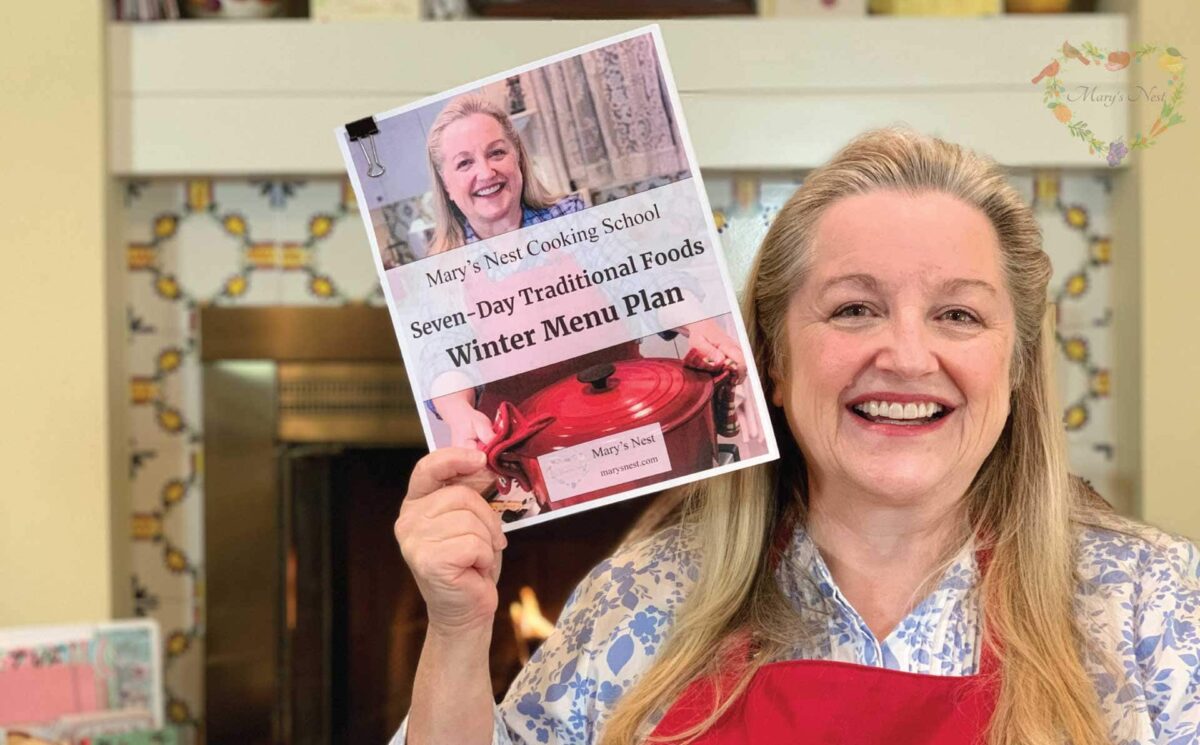
Get Started with a Winter Meal Plan
To help you develop this simple rhythm for your traditional foods kitchen, download my winter seven-day menu plan that will show you how to create a simple system for making a week’s worth of three traditional meals daily.
Even More of Your Questions Answered!
What I’ve shared here with you today are just a few of the topics I discuss in my latest video, and I hope they’ll inspire you to take the next step on your traditional foods journey. Remember, Sweet Friend, it’s all about progress, not perfection. Embrace each small change you make, and before you know it, you’ll have a kitchen that’s humming with the rhythm of traditional foods!
And there’s more…I have additional videos answering many of your frequently asked questions, so be sure to check those out, too. If you have a question I have not answered, please let me know in the comments below (or include your question in my video comments), and I will be happy to answer it!
- How to Deal With Picky Eaters and More Viewer Questions
- Personal Questions Answered – Something You Never Knew About Me!
Free Downloads
How to Make Meal Prep Fast with the Meal-in-a-Bag System
Make meal prep fast and easy with these seven free recipes you can download and print out to create your own Meals in Bags.
The FREE Modern Pioneer Cookbook Curriculum – Teach Traditional Cooking Skills to Grades K-12
This cookbook curriculum gives students a love of traditional foods and kitchen skills that will last them a lifetime.
How To Build Your Great Depression Pantry
Download my free Great Depression Pantry Shopping Guide to identify the Depression Era Foods you need to stock to weather difficult times.
Stay in Touch with Mary’s Nest
- Subscribe to My YouTube Channel for Traditional Foods Videos (Free) - When you subscribe, be sure to click on the notification bell that will let you know each time I upload a new video.
- Subscribe to Mary’s Traditional Foods Newsletter (Free) - Get a free 36-page eBook for signing up: How to Stock Your Essential Traditional Foods Four-Corners Pantry.
- Join the Traditional Foods Kitchen Academy - For more detailed videos and exclusive members-only perks, join my YouTube membership community.
- Order The Modern Pioneer Cookbook - Get a hardcover book of Mary's nourishing recipes from a Traditional Foods Kitchen. This bestselling cookbook is published by Penguin Random House with their DK imprint.
- Preorder The Modern Pioneer Pantry - Be one of the first to get Mary's hardcover book about preserving food and making delicious meals from your Four Corners Pantry. Mary's second cookbook is also published by Penguin Random House.
I look forward to having you join me in my Texas Hill Country Kitchen!
Shop for items used in this blog post or video
Favorite Kitchen Supplies
- Favorite Aprons
- Spice Grinder
- Countertop Burner (On my kitchen island in many recipe videos.)
- Handheld Vacuum Sealing System
- Vacuum Lids
- Whisk
- Silica Gel Packets (Helps keep moisture from building up in your mix)
- Cast Iron Dutch Oven
- 8-Quart Slow-Cooker
- Fat Separator (Clever kitchen device to help you decant bone broth)
- Flour Sack Towels
- pH Strips (Helps you check on the acidity of your vinegar)
Amazon Shop and Shopping Guide
- Visit Mary’s Nest Amazon Shop
- Visit my Shopping Guide page
Get up to 15% off for stocking your Traditional Foods Pantry and equipping your Modern Pioneer Kitchen, including discounts from US Wellness Meats, Farmhouse Teas, Lehman's, Masontops, Cultures for Health, Survival Garden Seeds, Redmond Real Salt, Plan to Eat, and More!
